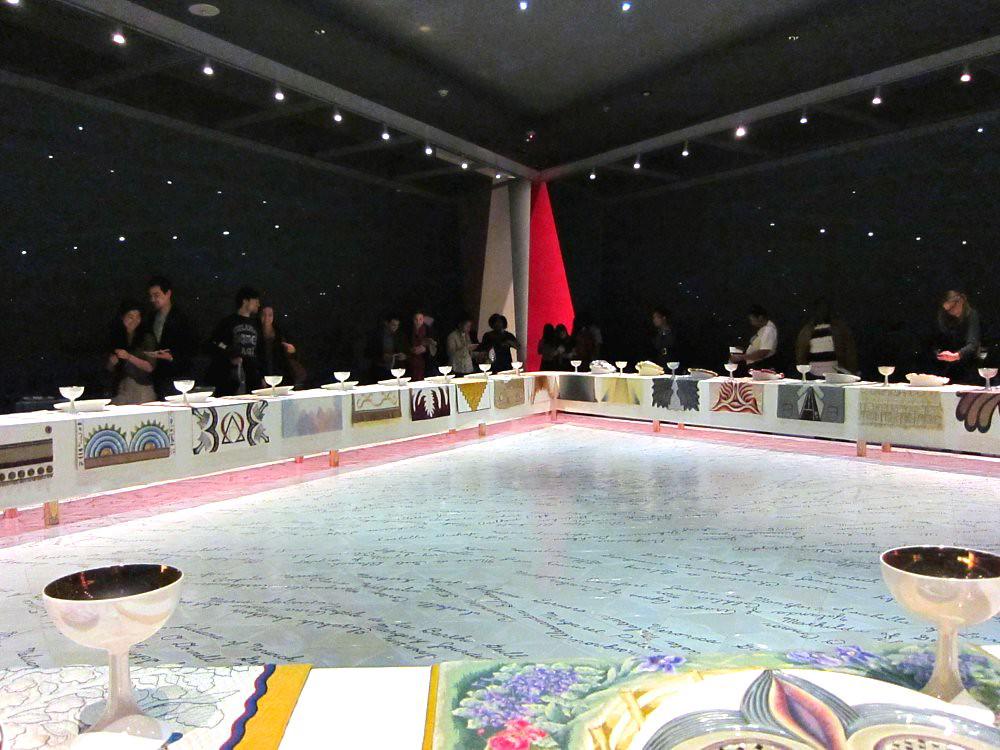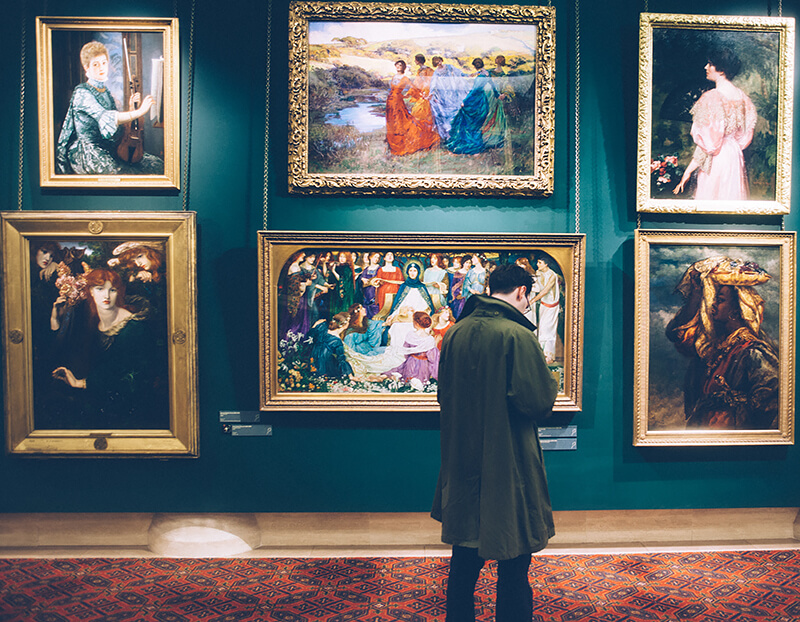Historical Exclusion and Recognition
Art has often mirrored societal structures, occasionally lifting the veil on entrenched norms. In the canvas of art history, women artists were often overshadowed by their male counterparts. This was not due to a lack of talent but the restrictive gates of art schools and galleries, firmly shut against them.
The art world, over centuries, undervalued women, clinging to the notion that they simply couldn't produce art of "quality." Yet, in this atmosphere, the Feminist Art Movement emerged in the 1960s and '70s, determined to challenge the oppressive barriers women faced.
Trailblazers like the Guerrilla Girls exposed the gender disparity prevalent in art institutions with humor and gorilla masks. Judy Chicago's fearless approach, using installations like The Dinner Party, defied the portrayal of women as passive figures. Groups such as WAR (Women Artists in Revolution) stood firm, uprooting archaic notions about female artists.
Today's modern museums and galleries, though still flawed, exhibit changes born from the clamor and courage of earlier activists. The art world is a mosaic, and the contributions of women are the vibrant pieces that bring it to life.
Pioneering Women Artists
Berthe Morisot, one of the formidable figures of Impressionism, stands among the luminaries who altered the visual discourse. In an era where women were often limited to domestic roles, Morisot's brush captured intimate moments of domestic life with a subtlety that challenged her contemporaries.
In the 20th century, Helen Frankenthaler emerged in Abstract Expressionism, wielding a paint-soaked sponge with revolutionary zeal. Her innovative techniques redefined painting itself, her method of staining canvas breaking from the strictures of traditional formality.
Judy Chicago harnessed art as a powerful tool against gender inequality. Her profound devotion to elevating women's stories is encapsulated in "The Dinner Party," a landmark installation that claimed space for female experiences and demanded recognition.
These pioneering women artists set the stage for dialogue and change, exploring the intersection of art and feminism. Their contributions enrich the mosaic of modern art, ensuring that their legacies inspire future generations of creators and visionaries.
Feminist Art Movement
The Feminist Art Movement emerged as a radical force in the 1960s and 1970s, challenging the deeply entrenched male dominance within the art world. These artists sought to dismantle the patriarchal structures that had long suppressed women's voices.
The Guerrilla Girls used humor to highlight inequalities in art representation. Their infamous billboard questioned why women had to be naked to be included in museum art collections, confronting the longstanding objectification of women.
Judy Chicago's "The Dinner Party" stood as a symbol of reclamation, celebrating historical and mythical women in a visual feast of presence and acknowledgment. It invited viewers to a table where women's contributions were the main course.
The movement pioneered alternative art spaces where women could freely express themselves without the constraints of traditional art institutions. These pockets of resistance became fertile grounds for creativity and innovation.
With each brushstroke, installation, and protest, feminist artists spearheaded a cultural dialogue that questioned not just artistic practice but societal norms at large. Their legacy continues to inspire new generations of artists who are driven to push boundaries and challenge conventions.

Contemporary Female Artists
In present times, contemporary art is enriched by the bold, innovative contributions of female artists who are actively redefining what it means to create. Their work stretches across disciplines and defies categorization.
- Marina Abramović: A pioneering force in performance art, she has spent decades unraveling the relationship between performer and audience. Her work "The Artist is Present" transformed the mundane act of sitting into a monumental statement.
- Cindy Sherman: Her "Untitled Film Stills" series reflects the myriad roles and stereotypes women are cast into. Each photograph speaks volumes about identity and artifice in a world obsessed with surface appearances.
- Yayoi Kusama: She challenges the boundaries of perception with her mind-bending creations. Her kaleidoscopic visions, from infinity rooms to polka-dotted environments, invite visitors into a dreamscape where imagination reigns supreme.
- Tracey Emin: She examines personal history and emotion, transforming intimacy into great art. Her work "My Bed" lays bare the raw, unfiltered essence of lived experience, inviting viewers into her most private spaces.
- Barbara Kruger: Her text-based works dissect cultural constructs with sharp wit and incisive critique. Her iconic piece, "I shop therefore I am," challenges consumerist ideals, urging viewers to question what they value and why.
These contemporary female artists forge new paths while maintaining a dialogue with past movements. Their work reminds us that art is not only a means of expression but a dynamic force capable of challenging norms and inspiring change.
In the mosaic of art history, women artists have moved from the margins to the forefront, reshaping stories with resilience and creativity. Their experiences remind us that art is a powerful medium for diverse voices, challenging norms and inspiring change.
- Lovelace C. Feminist Art in America: A History. New York: Harper Collins; 2019.
- Chicago J, Schapiro M. Womanhouse. Los Angeles: California Institute of the Arts; 1972.
- Lacy S, Labowitz L. In Mourning and In Rage. Performance art. Los Angeles; 1977.
- Kruger B. Untitled (I shop therefore I am). Photographic silkscreen/vinyl. 1987.
- Abramović M. The Artist is Present. Performance art. New York: Museum of Modern Art; 2010.























